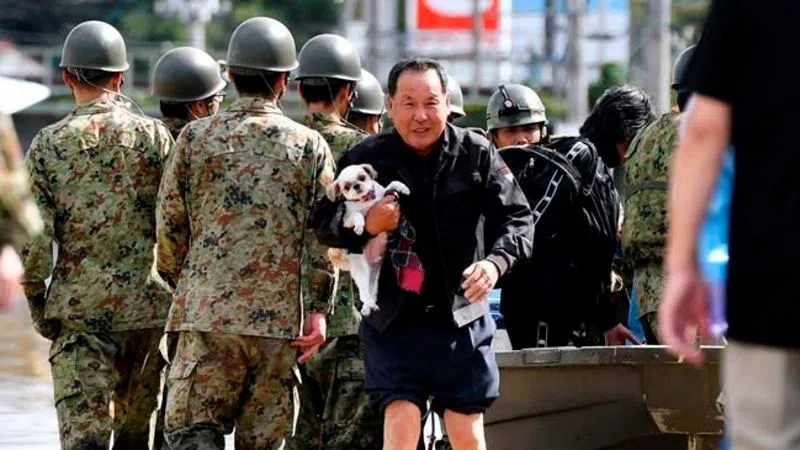
Typhoon leaves as many as 33 dead as Japan continues rescue
TOKYO — Helicopters, boats and thousands of troops were deployed across Japan to rescue people stranded in flooded homes Sunday, as the death toll from a ferocious typhoon climbed to as high as 33. One woman fell to her death as she was being placed inside a rescue helicopter.
Typhoon Hagibis made landfall south of Tokyo on Saturday evening and battered central and northern Japan with torrents of rain and powerful gusts of wind. The typhoon was downgraded to a tropical storm on Sunday.
Public broadcaster NHK said 14 rivers across the nation had flooded, some spilling out in more than one spot.
The Tokyo Fire Department said a woman in her 70s was accidentally dropped 40 metres (131 feet) to the ground while being transported into a rescue helicopter in Iwaki city in Fukushima prefecture, a northern area devastated by the typhoon.
